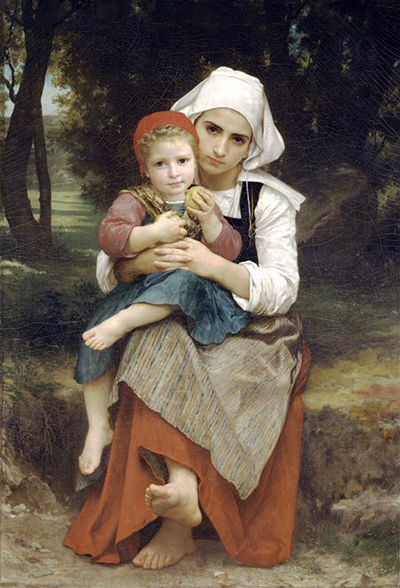History is kind to some artists, unkind to others; and at certain times it has the habit of being both kind and unkind to a single artist. Such is the case with William-Adolphe Bouguereau.
During his life in the nineteenth century, Bouguereau was regarded as one of the finest painters in France. His paintings captured the spirit of the Renaissance, with sumptuously-rendered mythological characters striking classical poses; an observer could be forgiven for mistaking him for a lost contemporary of Raphael or Botticelli.
Despite his international regard, he had one significant misfortune: the artistic world was playing host to a blossoming avant-garde which sought to modernise and to move on from tradition. And so, after his death in 1905, Bouguereau fell out of fashion, his Renaissance-influenced work widely seen as old-fashioned when compared to the art of the new century. Impressionism, expressionism and modernism were the new trends, and connoisseurs quickly forgot about Bouguereau.
But Bouguereau was later vindicated by history, even though it took many decades. His work was rediscovered by the artistic community around the mid-70s, and through the 80s more and more attention was paid to this once-forgotten painter. Bouguereau may have had the misfortune to work in a mode which was not in fashion, but with the benefit of hindsight, the modern world came to accept that his genius transcends era.
Art dealers began to pay more and more attention to Bouguereau's work, as the price tags on his paintings steadily rose throughout the years.
Although his mythically-themed paintings are what he is best remembered for, Bouguereau also produced multiple outstanding paintings that depicted day to day life in nineteenth-century France. Breton Brother and Sister shows a young woman and her much younger brother, bare-footed and clad in the peasant garb of their era. Behind them is a wooded clearing, hinting at the rural idyll that was becoming increasingly romanticised as the Industrial Revolution rolled on across Europe.
In a manner, Bouguereau has turned this everyday people into mythic characters: symbols of an eternal ideal, almost like nature spirits. The message of the painting may have been lost on some of Bouguereau's contemporaries, but to those of us in the twenty-first century - looking back on this long-lost world - we can see exactly what he achieved.




